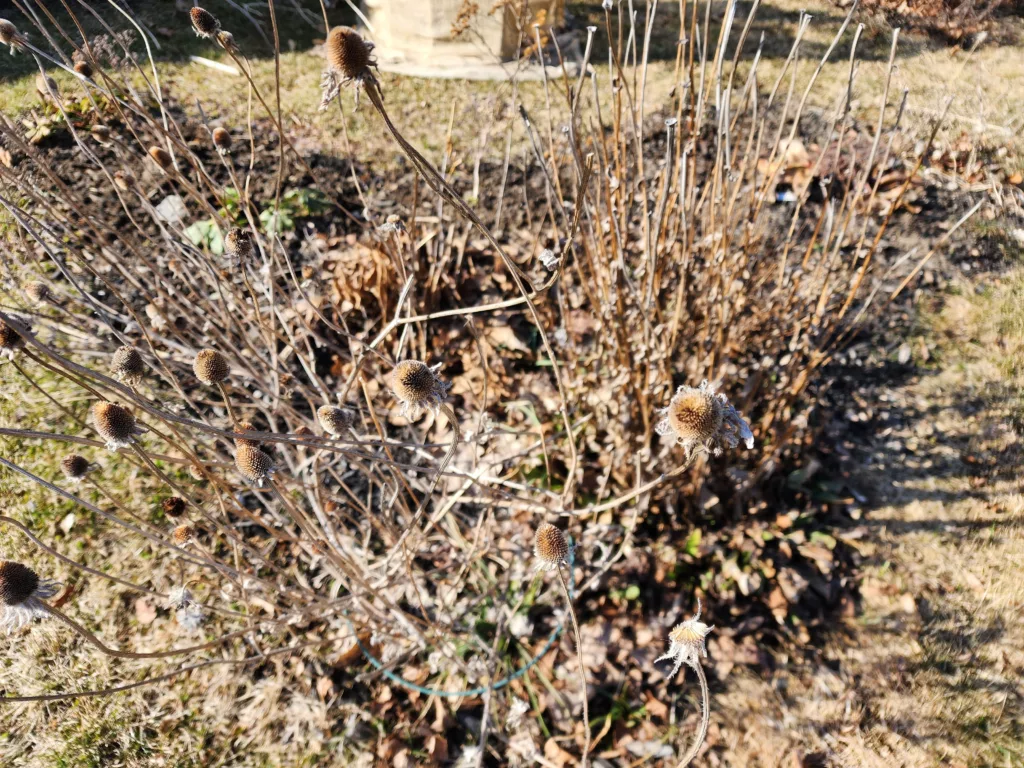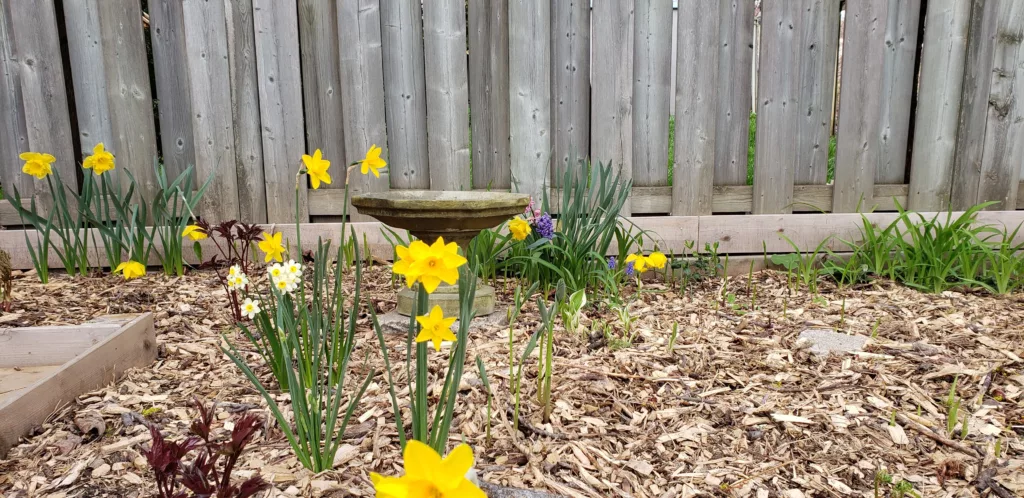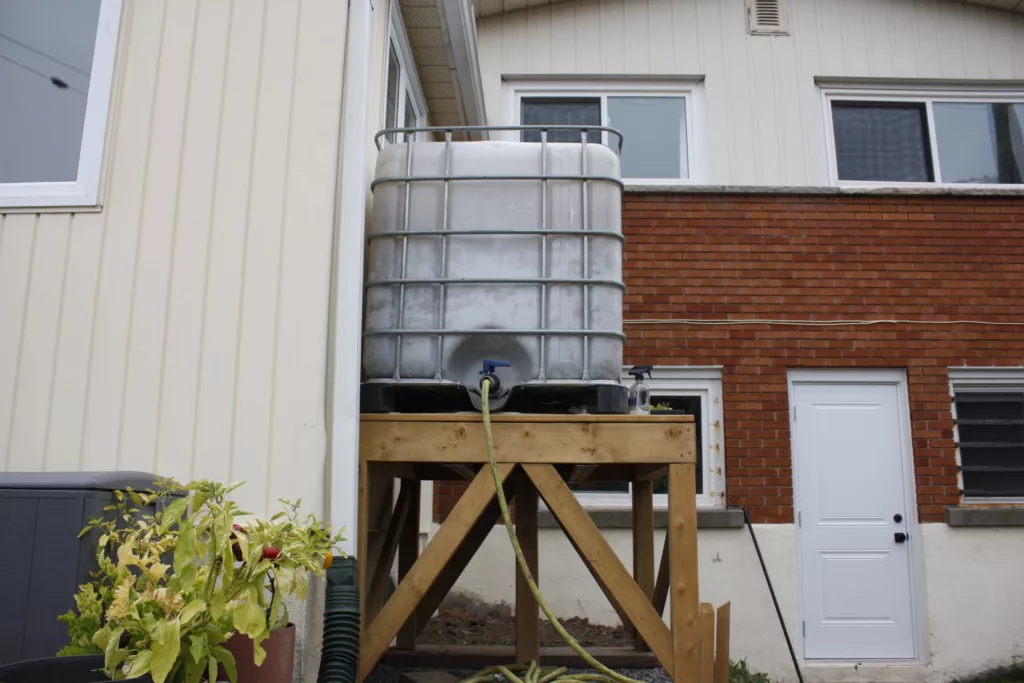You may think that closing your garden down in winter, and reopening it in spring with plants is all you need to do each year. However, the garden needs some TLC before it can be ready for plants this spring. The tasks in this article are items that can be done over the 3 months of spring, and cannot, and should not be done all at once. We have organized these 8 tips to match the season, with the first tips starting earlier in the spring ending with tasks to do in late spring.
We want to pause here for an important note: although the garden looks dead in early spring, it’s important to remember there are insects living, and hibernating in your garden. For a few of these tasks, keeping insects in mind is crucial to protect their populations. Insects require day time temperatures to (regularly) stay above 8-10°C in order to fly. This means, as long as temperatures are below this threshold, don’t disturb or throw away yard waste. However, to make it easier for you, we will remind you again in the designated sections.
In this article
Get the latest garden advice straight to your inbox
Plan new gardens
While the temperatures are still too cold to work outside, it makes for the perfect time to plan new gardens. This could be vegetable gardens, perennial flower beds, in ground, raised bed or even container gardens! During this phase, you can plan what you want to grow, where you want to grow it and how you want to grow (from seed, cuttings or seedlings). If this is your first garden you plan to have, check out our article here on picking the best plants for your garden. We also have a free wood raised garden plan here.
Clean & Maintain
Early spring is a great time to clean up last years tools, assess their quality and maintain as needed. Cleaning up tools, such as pruners, from dirt and rust can help prolong their lifespan. Washing seedling equipment will help prepare you to start seeds, and avoid introducing pathogens to your susceptible seedlings. If the weather is bearable, cleaning up your shed or greenhouse can help you start your season off with a fresh slate.
Clear old plants
Clear out plants from last season. This can be weeds, cover crop, or last years plants that you chopped and dropped in place. Avoid doing this early in the season, unless you throw it all in one pile in your yard. Insects hibernate in dead plants and cannot fly until temperatures are consistently above 8-10°C.

Top up gardens
Top up your gardens with good quality garden soil, compost or manure. Raised beds often sink over the winter, so adding new soil to the gardens help raise the soil level, and add nutrients for the upcoming season. Blending the new soil into the top few inches of the current soil helps distribute the nutrients further into the garden.
Similar to above, for in ground gardens, add a few inches of soil over your current garden and turn it into the current soil.
Mulch
Add mulch to your gardens to feed the soil, warm it faster, and help with water evaporation. Add wood chips to perennial gardens and compost or organic, seed-free straw to annual gardens. Make sure that the mulch is a couple inches thick to get the best benefits.

Stay in the now by signing up to our newsletter!
Prune Woody Perennials
Prune any woody plants that prefer to be cut in spring. These are plants that flower in the summer, such as lavender, butterfly bush, and dogwoods to name a few. Avoid pruning any plants that flower in spring, such as lilacs.
Cut Back Herbaceous Perennials
Cut back herbaceous perennials that were left in the garden as seed heads for birds, or for ornamental purposes. This includes echinacea, rudbeckia and sedums. For grasses, cut them back when 3-5cm of new growth is showing. We highly recommend cutting the plants and leaving them in place for a couple of weeks, to allow any hibernating insects to vacate the brush before you compost or put it out for yard waste.
Divide
Divide plants, such as hostas, sedum or hardy geranium, to help promote stronger growth. The best part about dividing perennials is you get more plants to move around the garden, or to gift to friends!
Set up rain barrels
Spring is the best time to set up rain barrels, but requires warmer night time temperatures. Watch the weather, and once the overnight temperatures consistently stay above zero, set up your rain barrels. You want to avoid having the water freeze in the barrel and breaking it, while also capitalizing on spring showers.

Spring time is filled with so much joy and excitement over what the season will bring but it’s important to set your garden up for success early. By following the above 9 tips, you will be ready for an amazing growing season ahead. It’s important to take care of our insect friends, because with healthy populations of beneficial insects, your garden can protect itself from pests such as aphids, cucumber beetles and hornworms.
If you enjoyed this article, you may enjoy these:








